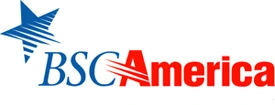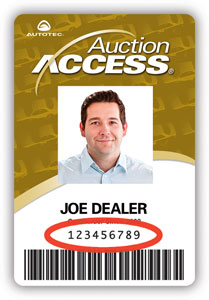The purpose of the NAAA Structural Damage Policy is to define and clarify terminology associated with structural issues and to specify the disclosure requirements of the seller for vehicles offered at NAAA affiliated auctions. The policy is intended to provide adequate disclosure to the buyer for informed purchase decisions and to limit arbitrations for the seller. This policy, along with the main Arbitration Policy will serve as the primary criteria for all arbitration proceedings.
1. Definitions- Vehicle Structure: The main load-bearing platform of a vehicle that gives strength, stability and design exclusivity and to which all other components of the vehicle are fastened. For purposes of this policy, there are three macro types:
- Unibody: A type of structure whereby the floor pan assembly, roof bows/braces, pillars, etc. are bonded together into one unit, thereby eliminating the need for a separate conventional structure.
- Unibody on Frame: A type of structure whereby a unitized structure is bolted to a conventional structure.
- Conventional Structure: A type of structure consisting of two symmetrical rails (beams) connected by various cross-members.
- UVMS: Used Vehicle Measurement Standard. The commercially acceptable measurement deviation from the vehicle’s original structural specification in order for any deviation not to be considered structural damage.
- Permanent Damage (Kinked or Broken): The result of two or more objects striking or coming together at a significant change in velocity that permanently deforms the structural component(s) rendering it non-repairable per the manufacturer.
- Structural Damage: Damage to the structure or a specific structural component of the vehicle. Often referred to as frame damage, although it also applies to Unibody and Unibody on Frame structures in addition to Conventional Frame.
- Certified Structural Repairs/Replacement: Repairs to a specifically identified structural component of a vehicle that has been certified to be within the Used Vehicle Measurement Standard (UVMS).
- Structural Alteration: An alteration to the vehicle’s structure including a lengthened or shortened frame, a modified suspension, or the installation or removal of after-market accessories.
Seller must disclose permanent structural damage, any structural alterations, structural repairs or replacements (certified or non-certified) as outlined in this policy prior to selling a vehicle at auction regardless of sales channel or light condition. Disclosures are required for the following:
- Any/all existing permanent (non-repairable aka kinked or broken) structural damage as defined in this policy.
- Improper and/or substandard prior repairs(not meeting OEM repair guidelines) Repairs not certified using OEM guidelines or to be within the UVMS Improper alterations to the structure Lengthened or Shortened structure verified by visual inspections.
- Altered suspension that requires the structure to be modified from its OEM form.
- After-market accessories installed or removed to the structure.
- Towing packages installed (or removed) where new holes are drilled, OEM holes are enlarged, or if the towing package is welded or brazed to the structure.
- Multiple access holes (regardless of size) or singular access holes greater than 5/8”. Access holes between ¼” and 5/8” are subject to disclosure based upon location and condition of structural component.
- Corrosion of structural components determined by one or more of the following: when the substrate loses its shape, the original bonds near the affected area are loose or are no longer in existence, the original thickness of the substrate has been changed by more than 25%, the affected area no longer possesses its absorption or deflection properties.
- Structural tear damage (i.e. transport tie down) if more than 1” in length (measured from tea start/stop points).
- Damage due to improper jacking or lifting that permanently deforms structural components outlined in this policy.
- Damage due to contact with parking abutments and/or road debris that permanently deforms structural components outlined in this policy.
- Roof bows/braces that have been modified, have existing permanent damage or removed. A replaced roof skin is not a required disclosure in terms of the Structural Damage Policy.
- The C pillar/quarter or cab panel may not be a structural component(s) as per the vehicle manufacturer.
- A vehicle may be arbitrated if it has undisclosed existing permanent damage alteration, Certified Repairs or Certified Replacement, which should have been disclosed under this policy, even though the vehicle is within the UVMS. If a structural issue is properly disclosed, the vehicle may only be arbitrated for improper repair of the designated area, existing permanent damage or repairs to other areas of the vehicle not disclosed, or for failure to be within the UVMS that was verified by visual inspection.
- Damaged or replaced radiator core supports or rear body panels do not require a structural disclosure under this policy.
- Damage to the aprons, rail floor pan assembly, inner wheelhouse (upper or lower), D pillar (if equipped) or other ancillary structural components on a unitized structure in the area where the radiator core support or rear body panel attaches will require a disclosure if permanent damage exists.
- Brazed exhaust hanger are not a required disclosure under this policy.
- Facilitating auction will, at its discretion, have a vehicle measured according to the UVMS at a facility of its choice. Prior to sending the vehicle for measurement, the auction reserves the right to complete a visual verification of the physical condition of the vehicle to determine that it should be measured. If the measuring facility determines that the vehicle is within the UVMS, the buyer of the vehicle will be responsible for the charges paid to the facility. Likewise, if he measuring facility determines that the vehicle is not within the UVMS, the seller will be responsible for the charges paid to the facility.
- Visual evidence supersedes any/all mechanical or electronic measurements.
- For measurements according to the UVMS, the following guidelines will apply:
- The vehicle structure must measure to a total tolerance of no more than +/- 8 millimeters (mm) of published specification of length width and height at control points that capture the front (2), center (4) and rear (2) sections of the vehicle.
- Symmetrically (comparative measure from side to side and point to point based on point measurement), the length, width and height must measure to a difference of no more than 6mm. Upper body measurements (tram gauge) by themselves will not be adequate.
- Buyer must arbitrate any/all structural misrepresentations as outlined in this policy within published timelines (outline in the main Arbitration Policy Guidelines) from date of purchase (purchase day counts as Day One).
- The buyer must contact and follow the arbitration process of the auction where the vehicle was purchased including the auction’s direction for return of the vehicle and the timeframe allowed for the vehicle to be returned.
- In the event of improperly disclosed structural damage by the seller, the buyer will be entitle to reimbursement in accordance with the main Arbitration Policy.
|
|
Structural Damage Disclosure Requirement
|
|||
|
Structural Component
|
Unibody
|
Unibody on Frame
|
Conventional Frame
|
|
|
1. Frame Rails (including Front, Center, and Rear Rails)
|
Existing Permanent Damage, Removed, Modified, Repaired, or Replaced
|
|||
|
2. Spring Pod, and Torque Box or Stabilizer Mount
|
N/A
|
Existing Permanent Damage, Removed, Modified, Repaired, or Replaced
|
||
|
3. Cross Members (Except Bolt-On)
|
Existing Permanent Damage, Removed, Modified, Repaired, or Replaced
|
|||
|
4. Apron Assembly
|
Existing Permanent Damage, Removed, Modified, Repaired, or Replaced
|
N/A
|
||
|
5. Strut Tower Assembly
|
Existing Permanent Damage, Removed, Modified, Repaired, or Replaced
|
N/A
|
||
|
6. Cowl Panel / Firewall
|
Existing Permanent Damage, Removed, Modified, Repaired, or Replaced
|
N/A
|
||
|
7. Support Pillars (Includes – “A”, “B”,
“C*” or “D”
|
Existing Permanent Damage, Removed, Modified, Repaired, or Replaced
|
|||
|
8. Roof Braces/Bows
|
Existing Permanent Damage, Removed, Modified, Repaired, or Replaced
|
|||
|
9. Rocker Panel (Outer)
|
Replacement Only
|
N/A
|
||
|
10. Rocker Panel (Inner)
|
Existing Permanent Damage, Removed, Modified, Repaired, or Replaced
|
N/A
|
||
|
11. Floor/Truck Panels
|
Tears 1″ or More, Existing Permanent Damage, Removed, Modified, Repaired, or
Replaced
|
N/A
|
||
|
12. Quarter* or Cab Panel*
|
Replacement Only
|
N/A
|
||
|
13. Inner Quarter Panel Assembly (Includes Inner Wheelhouse Panel, Rear Strut
Tower, and Wheelhouse Extension Lower)
|
Existing Permanent Damage, Removed, Modified, Repaired, or Replaced
|
N/A
|
||
*Only applies to corporate deemed structural per the vehicle manufacturer.



Structural Damage Policy Clarifying Points
Towing packages do not require announcement if done at factory or bolt on assembly.
Access holes for Paintless Dent Removal do not require announcement if 1/4 ”or smaller. Many PDR access holes in very close proximity or access holes greater than 1/4 ” need to be assessed on a case by case basis. Has the structural integrity of the vehicle been compromised?
Damaged or replaced core supports are not arbitrateable under this policy. Damage to the apron on a unibody in the area where the core support attaches may be arbitrateable if significant damage or distortion has occurred. Will the unibody measure within the UVMS?
Welded exhaust hangers are not arbitrateable under this policy.
Floor/trunk panels kinked constitute structural damage and must be disclosed. Tears in these panels that separate welds, rivets or other bonds also must be disclosed.
Quarter panel, rocker panel, floor pan, etc. damage to a conventional frame vehicle is not structural damage a does not require disclosure.
Unibody
- Strut towers will be present
- Rails and floor welded together
- No independent rail system
- Aprons will be present
- Core support typically welded to aprons
Unibody on Frame
- Unibody bolts to frame
- Rails independently bolted to suspension and drive train
- Has aprons
- No strut towers
- Rails tend to be a thicker gauge metal (iron)
- Core support is typically welded to aprons
Conventional Frame
- Body is not welded to frame
- Rails independently bolted to suspension and drive train
- No aprons
- No strut towers
- Rails tend to be a thicker gauge metal (iron)
- Core support is typically mounted by bolts only.



